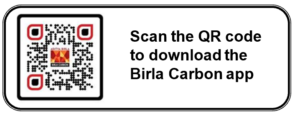Seawater Scrubbing Case Study – North Bend, USA
In 2012, the North Bend facility, of Birla Carbon USA, began to engage with the EPA, Department of Justice and various state agencies to understand the anticipated emission reduction targets. Internally, the plant began evaluating technologies that would reduce the unit’s NOx and SO2 emission levels.
As part of this evaluation process, the team considered other environmental impacts beyond just air emissions and how they could reduce these as much as possible through the technology selection, design, and construction. For instance, if the plant was to utilize the wet flue gas desulfurization process, it would have to dispose of approximately 30 truckloads (approximately 48,000 lbs each) each week, forever. The team estimated that this added to the existing generation of gypsum solid waste in the area and would have reduced the life of the local landfill from over 30 years to less than 12 years.
Hence, the team explored a novel technology that was not being used anywhere in the USA to remove SOx using seawater. The engaged with consulting firms to research regulatory permits and water sources for seawater scrubbing at the North Bend site. Its proximity to the Gulf of Mexico and the Gulf Inter-coastal Waterway and the absence of any threatened or endangered species in the area further made it a viable water source.
Following the required public notice, the plant began its engineering and construction efforts. Where safe to do so, they continued to work on the development during the pandemic as well. The scrubbing facilities commenced operation in FY 2022. By use of the innovative seawater SOx scrubbing system at North Bend, the unit is avoiding millions of tons of gypsum going to landfill per year and reducing SOx and NOx considerably.








